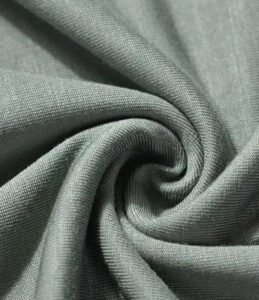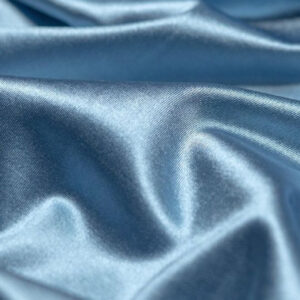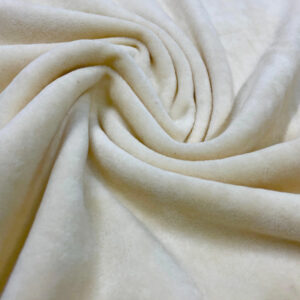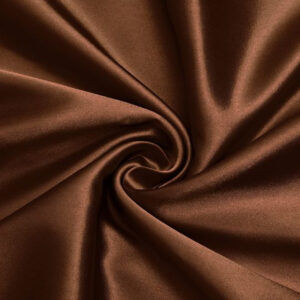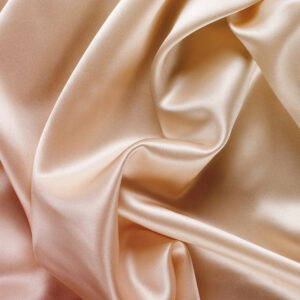The Composition Of Fabric
Fabrics Are Composed Of Fibers, Which Can Be Natural Or Synthetic. Natural Fibers Include Cotton, Wool, Silk, And Linen, While Synthetic Fibers Such As Polyester, Nylon, And Acrylic Have Become Increasingly Popular Due To Their Durability And Ease Of Care. The Blend Of These Fibers Determines The Characteristics Of The Fabric, Such As Its Texture, Strength, And Comfort.
Types Of Fabric
The World Of Fabrics Is Diverse, With Each Type Serving Specific Purposes:
Cotton: Known For Its Breathability And Softness, Cotton Is A Staple In Clothing Due To Its Comfort Against The Skin. It’s Also Highly Absorbent, Making It Ideal For Summer Wear And Bedding Materials.
Silks: Luxurious And Smooth, Silk Is Prized For Its Sheen And Drape. It’s A Protein Fiber Produced By Silkworms, And It’s Used In High-End Fashion And Home Decor For Its Elegance.
Wool: Offering Excellent Insulation, Wool Is Perfect For Cold Weather Clothing. It’s A Natural Fiber Sourced From Sheep And Other Animals, Known For Its Warmth And Water-Resistant Properties.
Linen: Derived From The Flax Plant, Linen Is Favored For Its Coolness And Sturdiness. It’s Often Used In Summer Clothing And Household Items Like Tablecloths And Napkins.
Synthetic Fabrics: Fabrics Like Polyester, Nylon, And Acrylic Are Made From Petroleum Byproducts. They’re Durable, Resistant To Shrinkage, And Easy To Maintain, Although They Can Lack The Breathability Of Natural Fibers.
Fabric Weaving And Knitting
The Structure Of A Fabric Is Determined By How Its Fibers Are Combined. Weaving Is The Most Common Method, Where Two Sets Of Yarns Are Interlaced At Right Angles To Form A Stable Fabric. Knitting Involves Looping Yarn Together To Create A Flexible, Elastic Fabric That’s Ideal For Stretchy Clothing Like Sweaters And Socks.
Uses Of Fabric
The Uses Of Fabric Span Across Various Industries:
Fashion: Fabric Is The Cornerstone Of The Fashion Industry, Used In The Creation Of Clothing, Accessories, And Footwear.
Home Furnishings: Fabrics Are Used For Curtains, Upholstery, Bedding, And Table Linens, Enhancing The Comfort And Aesthetics Of Homes.
Industrial Applications: In Industries Like Construction, Automotive, And Aerospace, Fabrics Are Used For Their Strength And Durability In Applications Such As Tents, Seat Covers, And Insulation.
Medical Uses: Fabrics Play A Crucial Role In Medical Textiles, Used In The Production Of Uniforms, Masks, Bandages, And More.
Choosing The Right Fabric
Selecting Fabric Depends On The Intended Use. Factors Such As Durability, Comfort, Care Requirements, And Cost Come Into Play. For Instance, A Fashion Designer Might Choose Silk For A High-End Gown But Opt For A Synthetic Blend For Activewear Due To Its Resilience And Lower Maintenance.
Conclusion
Understanding What Constitutes Fabric And Its Various Types Is Crucial For Anyone Working With Textiles. Whether You’re A Fashion Enthusiast, Interior Decorator, Or Involved In Product Development, Knowing The Properties Of Different Fabrics Can Guide You In Making The Best Choices For Your Projects. Fabric Is Not Just A Material But A Canvas For Creativity And Innovation, Shaping The Way We Live, Dress, And Interact With Our Environment.
Fabric, A Term Deeply Rooted In The Textile Industry, Refers To A Flexible, Flat Substance Made By Weaving, Knitting, Or Felting Fibers. It Is A Material With Two Dimensions (Length And Width) That Can Be Cut And Sewn Into Clothing And Other Products. The Versatility Of Fabric Knows No Bounds, Making It An Essential Component In Fashion, Home Furnishings, Industrial Applications, And More.
The Composition Of Fabric
Fabrics Are Composed Of Fibers, Which Can Be Natural Or Synthetic. Natural Fibers Include Cotton, Wool, Silk, And Linen, While Synthetic Fibers Such As Polyester, Nylon, And Acrylic Have Become Increasingly Popular Due To Their Durability And Ease Of Care. The Blend Of These Fibers Determines The Characteristics Of The Fabric, Such As Its Texture, Strength, And Comfort.
Types Of Fabric
The World Of Fabrics Is Diverse, With Each Type Serving Specific Purposes:
Cotton: Known For Its Breathability And Softness, Cotton Is A Staple In Clothing Due To Its Comfort Against The Skin. It’s Also Highly Absorbent, Making It Ideal For Summer Wear And Bedding Materials.
Silks: Luxurious And Smooth, Silk Is Prized For Its Sheen And Drape. It’s A Protein Fiber Produced By Silkworms, And It’s Used In High-End Fashion And Home Decor For Its Elegance.
Wool: Offering Excellent Insulation, Wool Is Perfect For Cold Weather Clothing. It’s A Natural Fiber Sourced From Sheep And Other Animals, Known For Its Warmth And Water-Resistant Properties.
Linen: Derived From The Flax Plant, Linen Is Favored For Its Coolness And Sturdiness. It’s Often Used In Summer Clothing And Household Items Like Tablecloths And Napkins.
Synthetic Fabrics: Fabrics Like Polyester, Nylon, And Acrylic Are Made From Petroleum Byproducts. They’re Durable, Resistant To Shrinkage, And Easy To Maintain, Although They Can Lack The Breathability Of Natural Fibers.
Fabric Weaving And Knitting
The Structure Of A Fabric Is Determined By How Its Fibers Are Combined. Weaving Is The Most Common Method, Where Two Sets Of Yarns Are Interlaced At Right Angles To Form A Stable Fabric. Knitting Involves Looping Yarn Together To Create A Flexible, Elastic Fabric That’s Ideal For Stretchy Clothing Like Sweaters And Socks.
Uses Of Fabric
The Uses Of Fabric Span Across Various Industries:
Fashion: Fabric Is The Cornerstone Of The Fashion Industry, Used In The Creation Of Clothing, Accessories, And Footwear.
Home Furnishings: Fabrics Are Used For Curtains, Upholstery, Bedding, And Table Linens, Enhancing The Comfort And Aesthetics Of Homes.
Industrial Applications: In Industries Like Construction, Automotive, And Aerospace, Fabrics Are Used For Their Strength And Durability In Applications Such As Tents, Seat Covers, And Insulation.
Medical Uses: Fabrics Play A Crucial Role In Medical Textiles, Used In The Production Of Uniforms, Masks, Bandages, And More.
Choosing The Right Fabric
Selecting Fabric Depends On The Intended Use. Factors Such As Durability, Comfort, Care Requirements, And Cost Come Into Play. For Instance, A Fashion Designer Might Choose Silk For A High-End Gown But Opt For A Synthetic Blend For Activewear Due To Its Resilience And Lower Maintenance.
Conclusion
Understanding What Constitutes Fabric And Its Various Types Is Crucial For Anyone Working With Textiles. Whether You’re A Fashion Enthusiast, Interior Decorator, Or Involved In Product Development, Knowing The Properties Of Different Fabrics Can Guide You In Making The Best Choices For Your Projects. Fabric Is Not Just A Material But A Canvas For Creativity And Innovation, Shaping The Way We Live, Dress, And Interact With Our Environment.

